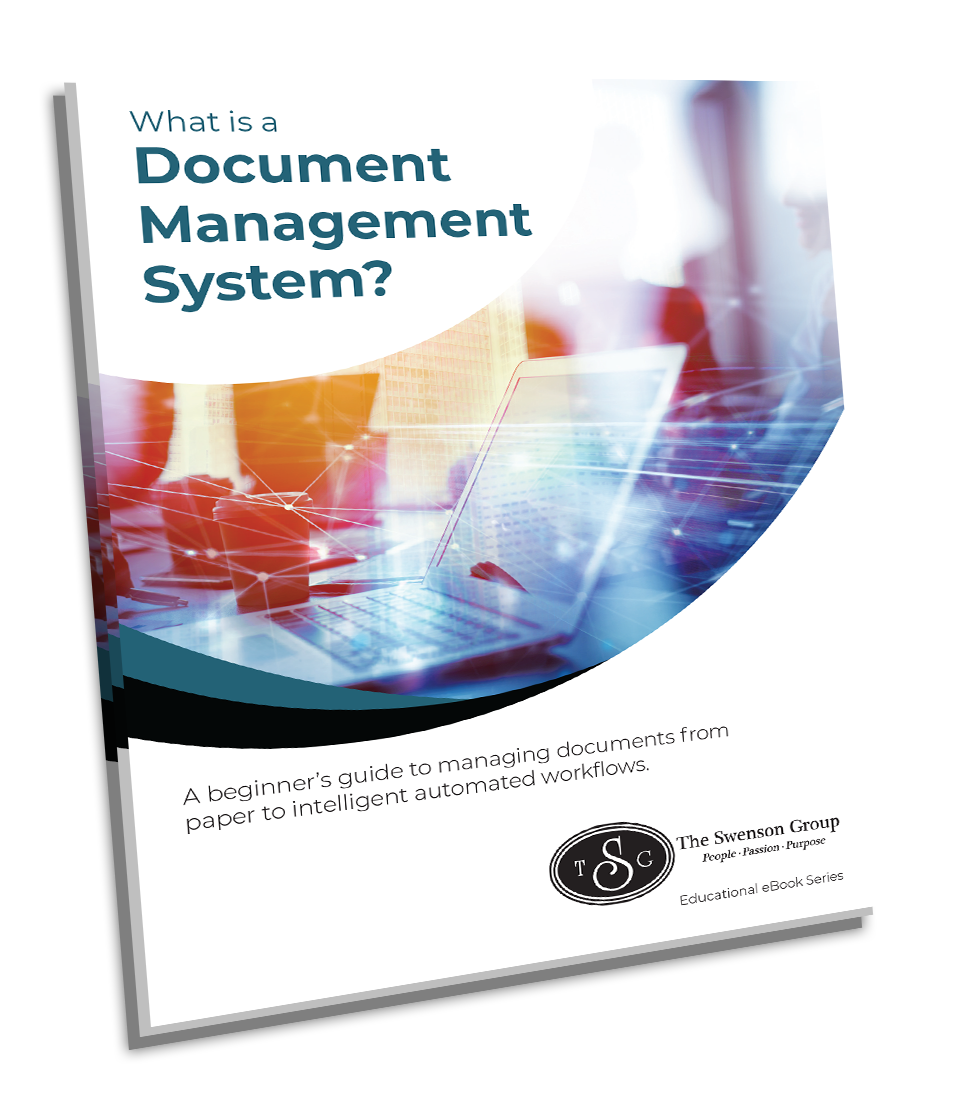Dean Swenson October 2nd, 2020 Blogs No Comments
Whether you’re thinking about implementing a digital document management system (DMS) for your company, or enhancing your existing system, focusing on best practices can result in a more effective and successful solution.
Five Essential Best Document Management Practices to Apply to Your Business
- Set Goals and Identify Key Performance Indicators – Many companies will implement some form of document management but won’t think about setting goals or how to measure progress. Document management systems have many business applications, so you need to be specific. Are you hoping to save on storage costs? Are you trying to improve collaboration? Or, are you looking for ways to help users find documents more quickly? Before you implement a solution, specify KPIs to measure progress toward your goals. For example, maybe with your current system it takes 10 minutes to process an invoice but after using the new system for a couple of months it takes only two minutes.
- Prioritize Business Processes and Systems to Automate – One of the most significant benefits of digital document management is the ability to automate processes to reduce time and effort. Focus on strategies that are most important to the business, such as improving customer response times, leveraging accounting systems to capture payment discounts, or speeding up a critical process.
- Consider Additional Automation Opportunities – Once you’ve prioritized some business processes to automate, look for ways to streamline workflows by integrating data capture with databases, applications, and notifications. By automating how you actually capture documents, you can make the information searchable, using workflows to intelligently detect the document type and automatically route it to the appropriate person.
- Improve on Paper-Based Processes Instead of Emulating or Duplicating Them – Many businesses make the mistake of trying to reconstruct paper processes digitally instead of using a new approach to eliminate inefficiencies. When setting up digital processes, ask yourself why you followed a particular procedure in the past, and if those steps are needed in this new context.
- Keep the User Interface Simple – A DMS is designed to help solve many different problems, but every feature doesn’t need to show up on every user’s screen. A good system should allow for customization to be able to show only the most useful features to meet each user’s needs. Simplifying the interface makes it easier for a person to accomplish the necessary tasks without overwhelming them with irrelevant details.
Talk to us about our document assessment service. Let us show you how you can reduce costs and increase productivity with our affordable document management solutions.
Subscribe to our Blog
What is a Document Management System?
A beginner's guide to managing documents from paper to intelligent automated workflows.
FREE DOWNLOAD

7 Avoidable Mistakes Most IT Managers Make
Popular eBook for IT leaders and Business Owners.
GET YOUR COPY






